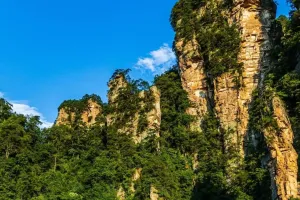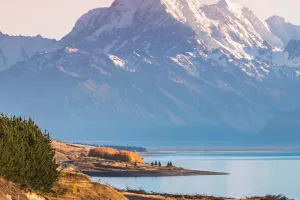Forest resources, in a narrow sense, mainly refer to tree resources, particularly arboreal resources; in a broad sense, refer to the general term for trees, land, plants, animals, microorganisms, and natural environmental conditions.
The forest is an ecosystem with the largest distribution area, the most complex structure, and the richest biodiversity on land. Forests are known as the general regulator of nature and the "lungs of the earth", maintaining the global ecological balance.
They are the largest carbon reservoir and the most economical carbon absorber and play a special role in coping with climate change and maintaining climate security. Green plants convert solar energy into chemical energy through photosynthesis, and convert carbon dioxide in the atmosphere into organic matter, providing the most basic source of material and energy for the biological world.
It is common knowledge that the forest absorbs carbon dioxide and releases oxygen through photosynthesis, making it the largest natural oxygen factory. Research shows that for every 44 grams of carbon dioxide absorbed by trees, 32 grams of oxygen can be emitted. Through photosynthesis, the forest accumulates and releases 1.62 tons of oxygen for every cubic meter of growth. During the peak season of tree growth, one hectare of broad-leaved forest can absorb 1,000 kilograms of carbon dioxide and produce 730 kilograms of oxygen every day.
An adult consumes 0.75 kg of oxygen and emits 0.9 kg of carbon dioxide per day. According to this standard leaf calculation, the oxygen produced by 1 hectare of broad-leaved forest can breathe for nearly 1,000 people. According to other information, the global forests and green spaces process nearly 100 billion tons of carbon dioxide for human beings every year and provide 60% of the clean oxygen for the air.
With global warming, cities are constantly being washed by heat waves. Although the "heat island effect" is no longer an unfamiliar term to people, few people know about its harm to human health.
Due to the high population density in urban areas, the high-temperature environment is more conducive to the growth and spread of microorganisms and germs. This can lead to various chronic and infectious diseases, resulting in a large number of heatstroke cases, increased incidence of cardiovascular and cerebrovascular diseases, and mortality rate. The high temperatures will also exacerbate photochemical pollution in the atmosphere, leading to eye diseases and respiratory diseases.
Normally, the canopy absorbs 80% of the sun's radiation. Most of the absorbed solar radiation is used for photosynthesis and transpiration, which does not cause a sharp increase in temperature but has a cooling effect.
According to relevant statistics, each hectare of green land absorbs an average of 81.8 megajoules of heat from the surrounding environment every day, which is equivalent to the cooling effect of 189 air conditioners. Therefore, afforestation vigorously in cities and the construction of forest cities will greatly weaken the harm caused by the "heat island effect" to people.
Throughout the long history of human development, humans have been unable to survive without the protection of forests. Today, except for some mysterious primitive tribes hidden in the primeval forest, the forest is no longer the place where most humans live. The beneficial ingredients that forests offer for human health are indeed research topics that we should appreciate and cherish.


